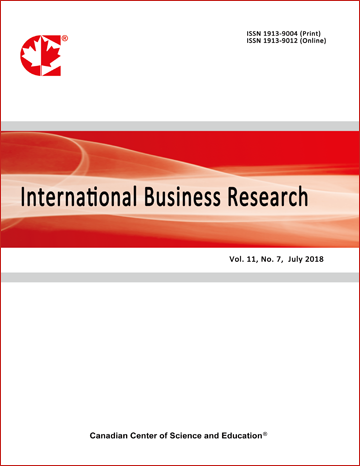Calculating the Departmental Credit-Hour Cost for Higher Learning Institutions Using Joint Costing and Activity-Based Costing Systems Simultaneously
- Saleem Ramadan
- Mahmoud Barghash
Abstract
The question of how to calculate the effective credit hour costs for different departments in Higher Learning Institutions was approached in this paper using Joint Costing and Activity-Based Costing techniques. The cost of the effective credit hour in the higher learning institutions was treated as joint cost problem. The main advantage of joint cost analysis is its ability to handle multiple faculties who are using common resources up to achieve split off so that each faculty has its own separable cost. The departments within the faculty were also treated as joint cost problem as these departments use common resources up to their split off point as well. The Activity-Based Costing system (ABC) then was used because of its ability to allocate the joint costs to the corresponding faculties and departments. Furthermore, the separable costs pertaining the different departments were added to calculate the departments’ costs. We suggest that the annual effective departmental credit-hour cost to be calculated by dividing the annual total cost of the department by the annual effective number of credit hours taught in that department. The Knapsack model was applied at each cost level to determine the optimal cost driver set for the Activity-Based costing analysis such that a tradeoff between the precision and the cost of the information obtained from the analysis was reached.
The proposed model was explained using a hypothetical example of a university containing 9 faculties such that the costs incurred for the university were decomposed into four levels: Facility level and it included all the costs that were not directly related to any of the faculties or departments, Product level and it included all the costs that were related to a certain faculty and not related to a specific department within that faculty, Batch level and it included all the costs that were directly related to a specific department, and finally, the Unit level and it included the annual effective number of hours registered in a department. Originally 12 cost drivers were considered for this hypothetical problem, and then a binary programming model utilizing the Knapsack setup was used to select an optimal set of 9 cost drivers such that those who are not selected were combined with the ones that were selected. The results showed that the proposed method offered precise information about the annual departmental credit-hour cost for higher learning institutions.
- Full Text:
 PDF
PDF
- DOI:10.5539/ibr.v8n5p195
Journal Metrics
h-index (January 2024): 102
i10-index (January 2024): 947
h5-index (January 2024): N/A
h5-median(January 2024): N/A
( The data was calculated based on Google Scholar Citations. Click Here to Learn More. )
Index
- Academic Journals Database
- ACNP
- ANVUR (Italian National Agency for the Evaluation of Universities and Research Institutes)
- CNKI Scholar
- COPAC
- CrossRef
- EBSCOhost
- EconBiz
- ECONIS
- EconPapers
- Elektronische Zeitschriftenbibliothek (EZB)
- EuroPub Database
- Excellence in Research for Australia (ERA)
- Genamics JournalSeek
- Google Scholar
- Harvard Library
- IBZ Online
- IDEAS
- Infotrieve
- Kobson
- LOCKSS
- Mendeley
- MIAR
- Norwegian Centre for Research Data (NSD)
- PKP Open Archives Harvester
- Publons
- Qualis/CAPES
- RePEc
- ResearchGate
- ROAD
- Scilit
- SHERPA/RoMEO
- SocioRePEc
- Technische Informationsbibliothek (TIB)
- The Keepers Registry
- UCR Library
- Universe Digital Library
- ZBW-German National Library of Economics
- Zeitschriften Daten Bank (ZDB)
Contact
- Kevin DuranEditorial Assistant
- ibr@ccsenet.org
